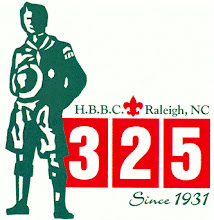
OK, this trip was almost a year ago, so I'm going on memory here. Thanks to Mr. Bumgarner for planning and leading this one.
Originally, we were going to paddle from Harker's Island out to Cape Lookout National Seashore and camp on Shackleford Banks with the wild horses. But predicted high seas, wind & rain, forced us to Plan B, which was paddling from Cedar Point to Dudley Island near Hammocks Beach State Park, NC.
We picked up our kayaks from the outfitter, and had an easy paddle with the outgoing tide to Dudley Island. After pitching our tents above the high water mark, we collected driftwood and dug a pit in the sand for our fire, then set up the stoves to heat our MRE's. MRE is military speak for Meal Ready to Eat. The soldiers who live off them for weeks on end have other definitions, the most kind being, "Meals Rejected by Everyone", and "Meals Refusing to Exit." They're actually not that bad. Each waterproof package contains an entree, dessert, powdered drink mix, coffee, utensils, and condiments. The entrees are not dehydrated. You just drop the bombproof pouch in boiling water for a few minutes, and you've got a hot meal.
Several things make beach camping more difficult than traditional camping. First, normal tent stakes won't hold at all in loose sand. There are a few alternatives, such as extra long V-shaped stakes, but they're also extra heavy. Sand anchors are X-shaped devices with the tent guy attached to the center and then buried flat in the sand. Unfortunately, these don't pack down very small. Since we were traveling by boat, neither was ideal, so we tried something different. Before the trip, we took regular plastic grocery bags, about 8 per tent, and tied a 3 foot length of paracord through both handles of the bag. Each was folded up and rapped tightly with the loose end of the cord, so they packed very small and weighed virtually nothing. After setting up the tents, we dug a hole where each stake would normally go, filling the bag with the sand, then placing it in the hole and covering with more sand. This gave us over 50 lbs. anchoring each tent. Good thing.
Secondly, there was zero fresh water on the island, so we had to bring it all with us. This is why we chose MRE's over the dehydrated meals we normally use when backpacking. That and the fact that Mr. Bumgarner had several cases left over after The Y2K Disaster.
Lastly, there was very little shade on Dudley Island. Fortunately, the sky was overcast all weekend so a little sunscreen went a long way.
After our gourmet dinner Friday night, we had a bonfire that could be seen from space. Saturday morning we paddled around the back of Dudley to Huggins Island, the site of a Confederate cannon battery. After searching the island for the fortifications, we realized we were standing on them. Low earthen berms are all that remain. After lunch we paddled back to Dudley, but the slack tide forced us to take a much longer route, with a pretty stiff headwind, resulting in all the bodies flopped on the beach for an afternoon nap.
Unfortunately, the foul weather we tried to avoid with Plan B found us anyway, so it was an early dinner, and early to bed. We monitored our NOAA radio into the night, and realized that the weather was to be much worse than predicted, so we decided to paddle out as early as possible the next morning. That night we had torrential rains, and wind gusts up to 45mph, but our low budget, low tech sand anchors worked great.
By Sunday morning, most of the rain had stopped, but we still faced a long paddle back into a headwind blowing so hard it pretty much neutralized the incoming tide that would have helped us. The stretch across the open Intercoastal was especially brutal but everyone just put their heads down and kept digging, finally making our way back to Cedar Point and the nearest Bojangles.
